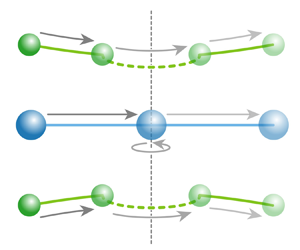Refine listing
Actions for selected content:
1418609 results in Open Access
Successful biventricular repair following strategic treatment focused on left ventricular growth in a patient with hypoplastic left heart complex and unbalanced right dominant atrioventricular septal defect: a case report
-
- Journal:
- Cardiology in the Young / Volume 35 / Issue 2 / February 2025
- Published online by Cambridge University Press:
- 28 January 2025, pp. 430-432
-
- Article
- Export citation
Did Women's Rights Have a Place in Eastern European Human Rights Dissent? The Case of Charter 77 and Czechoslovakia, 1977–1992
-
- Journal:
- Contemporary European History , First View
- Published online by Cambridge University Press:
- 28 January 2025, pp. 1-16
-
- Article
- Export citation
Control of microparticles through hydrodynamic interactions
-
- Journal:
- Journal of Fluid Mechanics / Volume 1004 / 10 February 2025
- Published online by Cambridge University Press:
- 28 January 2025, A4
-
- Article
-
- You have access
- Open access
- HTML
- Export citation
Defining variances in practice for use of electrophysiology studies in risk stratification of patients with repaired tetralogy of Fallot: a PACES survey
-
- Journal:
- Cardiology in the Young / Volume 35 / Issue 2 / February 2025
- Published online by Cambridge University Press:
- 28 January 2025, pp. 424-426
-
- Article
- Export citation
“A Position Which My Gayness Itself Leads Me to Take”: Sexual-Minority Antiabortion Activists
-
- Journal:
- Journal of American Studies , First View
- Published online by Cambridge University Press:
- 28 January 2025, pp. 1-28
-
- Article
- Export citation
Worthy of Freedom: Indenture and Free Labor in the Era of Emancipation. By Jonathan Connolly. Chicago: University of Chicago Press, 2024.
-
- Journal:
- Law & Society Review / Volume 59 / Issue 1 / March 2025
- Published online by Cambridge University Press:
- 28 January 2025, pp. 214-216
- Print publication:
- March 2025
-
- Article
- Export citation
Battery pack technological considerations for hybrid-electric regional aircraft feasibility
-
- Journal:
- The Aeronautical Journal / Volume 129 / Issue 1335 / May 2025
- Published online by Cambridge University Press:
- 28 January 2025, pp. 1142-1166
-
- Article
-
- You have access
- Open access
- HTML
- Export citation
Efficacy of Congressional Oversight
-
- Journal:
- American Political Science Review , First View
- Published online by Cambridge University Press:
- 28 January 2025, pp. 1-19
-
- Article
-
- You have access
- Open access
- HTML
- Export citation
Large deviation principle for slow-fast rough differential equations via controlled rough paths
- Part of
-
- Journal:
- Proceedings of the Royal Society of Edinburgh. Section A: Mathematics , First View
- Published online by Cambridge University Press:
- 28 January 2025, pp. 1-31
-
- Article
- Export citation
Dismantling pervasive gender stereotypes in healthcare leadership contexts with an ecological systems theory approach
-
- Journal:
- Journal of Management & Organization / Volume 30 / Issue 6 / November 2024
- Published online by Cambridge University Press:
- 28 January 2025, pp. 2223-2254
-
- Article
-
- You have access
- Open access
- HTML
- Export citation
Rustics as instruments of God's wrath. News about the battle of “Posada” in the Ordensland of Prussia
-
- Journal:
- Central European History / Volume 58 / Issue 2 / June 2025
- Published online by Cambridge University Press:
- 28 January 2025, pp. 179-199
- Print publication:
- June 2025
-
- Article
- Export citation
Neoliberalism from Within: The Business Fund and the Struggle for Market Ideology in Sweden
-
- Journal:
- Contemporary European History / Volume 34 / Issue 2 / May 2025
- Published online by Cambridge University Press:
- 28 January 2025, pp. 380-396
- Print publication:
- May 2025
-
- Article
-
- You have access
- Open access
- HTML
- Export citation
The prevalence of food addiction and its association with type 2 diabetes: a systematic review with meta-analysis
-
- Journal:
- British Journal of Nutrition / Volume 133 / Issue 4 / 28 February 2025
- Published online by Cambridge University Press:
- 28 January 2025, pp. 558-566
- Print publication:
- 28 February 2025
-
- Article
- Export citation
Inertial collapse of a gas bubble in a shear flow near a rigid wall
-
- Journal:
- Journal of Fluid Mechanics / Volume 1004 / 10 February 2025
- Published online by Cambridge University Press:
- 28 January 2025, A3
-
- Article
-
- You have access
- Open access
- HTML
- Export citation
Discrete group actions on 3-manifolds and embeddable Cayley complexes
- Part of
-
- Journal:
- Canadian Journal of Mathematics , First View
- Published online by Cambridge University Press:
- 28 January 2025, pp. 1-26
-
- Article
-
- You have access
- Open access
- HTML
- Export citation
Małgorzata Kowalczyk, Borrowings in informal American English (Studies in English Language). Cambridge: Cambridge University Press, 2023. Pp. xii + 334. ISBN 9781009346917.
-
- Journal:
- English Language & Linguistics / Volume 29 / Issue 2 / June 2025
- Published online by Cambridge University Press:
- 28 January 2025, pp. 429-433
-
- Article
- Export citation
On smooth and peaked travelling waves in a local model for shallow water waves
-
- Journal:
- Journal of Fluid Mechanics / Volume 1004 / 10 February 2025
- Published online by Cambridge University Press:
- 28 January 2025, A1
-
- Article
-
- You have access
- Open access
- HTML
- Export citation
Land and the Liberal Project: Canada's Violent Expansion Éléna Choquette. Vancouver: University of British Columbia Press, 2024. pp. 232.
-
- Journal:
- Canadian Journal of Political Science/Revue canadienne de science politique / Volume 57 / Issue 4 / December 2024
- Published online by Cambridge University Press:
- 28 January 2025, pp. 960-962
-
- Article
- Export citation
Device-assisted transcatheter closure of large secundum atrial septal defects: a novel approach
-
- Journal:
- Cardiology in the Young / Volume 35 / Issue 3 / March 2025
- Published online by Cambridge University Press:
- 28 January 2025, pp. 505-512
-
- Article
- Export citation
















